The night sky has evoked wonder and curiosity in humans for centuries. Throughout history, astronomers have gazed at the celestial bodies, seeking to unlock the secrets hidden within the vast expanse of the universe. But how do astronomers communicate with the stars? In this article, we will delve into the language of the stars, exploring the ancient origins of astronomy and the techniques used by modern astronomers to decipher the messages from the night sky. From spectroscopy to astrometry, we will unravel the intricate methods employed by astronomers to understand the elements, properties, and structures of the cosmos. Join us on a journey of discovery as we unveil the language of the stars and uncover the secrets of the universe.
Contents
- The Ancient Origins
- Modern Astronomy
- The Language of the Stars
- Interpreting Celestial Messages
- Uncovering the Universe’s Secrets
- Conclusion
-
Frequently Asked Questions
- 1. How did ancient civilizations track the movements of celestial bodies?
- 2. What role did astrology play in ancient astronomical observations?
- 3. How have telescopes revolutionized modern astronomy?
- 4. What is spectroscopy and how does it help astronomers understand the elements?
- 5. What is the significance of astrometry in mapping the heavens?
- 6. How do astronomers classify stars?
- 7. How do astronomers identify exoplanets?
- 8. What are supernovae and why are they important in stellar communication?
- 9. What are gamma-ray bursts and how do they serve as cosmic telecommunications?
- 10. What is the cosmic microwave background and why is it considered an ancient whisper?
- References
-
Frequently Asked Questions
- 1. What are the ancient origins of astronomy?
- 2. How do astronomers collect data about celestial objects?
- 3. What is spectroscopy, and how does it help astronomers understand celestial elements?
- 4. How do astronomers identify exoplanets?
- 5. What is the significance of supernovae in astronomy?
- 6. How do astronomers communicate information about galactic structures?
- 7. What is the cosmic microwave background, and why is it significant?
- 8. How do astronomers classify different types of stars?
- 9. What are gamma-ray bursts, and why are they important in cosmic telecommunications?
- 10. How do astronomers decipher the properties of distant stars through photometry?
- References
- Read More
The Ancient Origins

The study of the stars can be traced back to ancient civilizations, where early astronomers made their first observations of the night sky. These ancient astronomers, driven by curiosity and the desire to understand the world around them, looked up at the twinkling lights above and began to unravel the mysteries of the cosmos. The Babylonians, for example, created some of the earliest astronomical records known to human history. Through careful observations and meticulous record-keeping, they were able to track the movements of celestial bodies and develop a rudimentary understanding of the night sky. Similarly, the ancient Egyptians integrated their observations of the stars into their religious and mythological beliefs, associating certain constellations with their gods and goddesses. One notable constellation is Ophiuchus, often associated with healing and medicine in ancient mythology. As these ancient civilizations studied the stars, they laid the foundation for modern astronomy, setting the stage for centuries of scientific discovery and exploration.
1.1 The First Observations
The emergence of astronomy can be traced back to the first observations made by ancient civilizations. These early astronomers, driven by a sense of awe and curiosity, began to study the night sky and analyze the patterns and movements of celestial bodies. Through their observations, they sought to make sense of the vast expanse above them. The ancient Egyptians, for instance, saw a divine connection between the stars and their religious beliefs. They incorporated their observations into their mythologies and associated certain constellations with their gods and goddesses. The study of celestial objects also played a role in the development of calendars, as early astronomers used their observations to track and predict astronomical events, such as eclipses and solstices. The Babylonians, known for their meticulous record-keeping, were among the first to document these observations and create an early system for tracking celestial movements. These early observations of the night sky laid the foundation for future generations of astronomers, sparking a curiosity that would propel the study of the stars forward. To learn more about the origins and symbolism of constellations in ancient mythology, you can explore the fascinating link between astronomy and mythology in this article.
1.2 Early Astronomical Records
Early astronomical records serve as crucial evidence of humanity’s fascination with the night sky and their attempts to make sense of it. In ancient civilizations such as Mesopotamia and Egypt, meticulous records were kept to track the movements of celestial bodies and celestial events. The Babylonians, for instance, created clay tablets known as cuneiform texts, which contained detailed astronomical information such as planetary positions and lunar phases. These records were crucial not only for practical purposes such as predicting eclipses and measuring time but also for religious and mythological beliefs. In fact, the Egyptians associated the motions of the stars with their gods and goddesses, weaving mythology and astronomy together. One notable myth is that of King Midas and his golden touch, which although not directly related to astronomical records, represents the intertwining of ancient mythology and historical storytelling. These early astronomical records paved the way for future discoveries and laid the foundation for the modern understanding of celestial phenomena. Without the meticulous observations and documentation of ancient astronomers, our knowledge of the night sky would be significantly impoverished.
Modern Astronomy
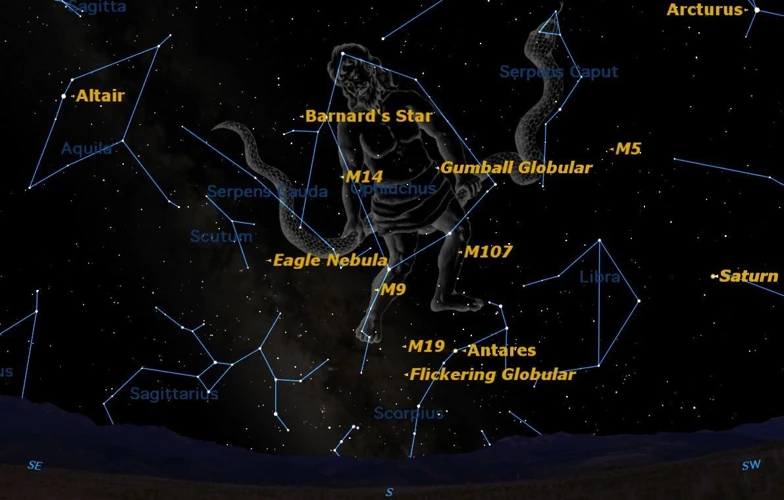
Modern astronomy has come a long way from the early observations of ancient civilizations. One of the key advancements in modern astronomy is the development of sophisticated telescopes and observatories equipped with state-of-the-art technology. These powerful instruments allow astronomers to observe celestial objects with unprecedented clarity and precision. Additionally, data collection methods have greatly improved, with astronomers relying on various techniques such as spectroscopy and photometry to gather information about the stars and galaxies. Spectroscopy, for example, enables scientists to unveil the elements present in celestial objects by analyzing the light they emit. On the other hand, photometry helps in decrypting stellar properties, such as the temperature, luminosity, and size of stars. Astrometry plays a crucial role in mapping the heavens, allowing astronomers to precisely locate and track the positions and movements of celestial bodies. With the aid of these advancements, astronomers continue to expand our understanding of the universe and unravel its mysteries.
2.1 Telescopes and Observatories
Telescopes and observatories play a crucial role in modern astronomy, allowing scientists to peer deeper into the cosmic depths and unravel the mysteries of the universe. The development of telescopes revolutionized our understanding of the stars and expanded our knowledge beyond what the naked eye could perceive. Telescopes come in various forms, such as optical telescopes that use lenses or mirrors to gather and focus light. They can also be radio telescopes, which capture radio waves emitted by celestial objects. These instruments are often housed in observatories, specialized facilities equipped with state-of-the-art technology and located in remote areas with minimal light pollution. Observatories provide an optimal environment for astronomers to perform their observations and capture high-resolution images and data from the night sky. Some famous observatories include the Hubble Space Telescope, known for its breathtaking images of distant galaxies, and the Very Large Array (VLA), a collection of radio telescopes in New Mexico that has played a significant role in studying the universe’s radio emissions. With ever-advancing technology, telescopes and observatories continue to push the boundaries of our understanding, allowing scientists to explore new frontiers and uncover the secrets of the cosmos.
2.2 Data Collection Methods
Data collection methods in modern astronomy have greatly evolved, allowing astronomers to gather vast amounts of information from the night sky. One of the primary methods used is telescopes, which are used to observe and capture images of celestial objects. Telescopes come in various types, each suited for different wavelengths of light. For instance, optical telescopes capture visible light, while radio telescopes detect radio waves emitted by cosmic sources. Another data collection method is spectroscopy, which involves analyzing the electromagnetic spectrum emitted by celestial objects. By breaking down the light into its constituent wavelengths, astronomers can determine the chemical composition and physical properties of stars and galaxies. Additionally, photometry enables astronomers to measure the brightness variations of celestial objects over time. This method is particularly useful in studying variable stars, eclipsing binary systems, and exoplanet transits. Furthermore, astrometry plays a crucial role in mapping the positions and motions of celestial objects. By precisely measuring the positions of stars, astronomers can study their proper motions, parallaxes, and calculate their distances from Earth. These data collection methods provide astronomers with an abundance of information that helps unlock the mysteries of the universe and contribute to our understanding of its vastness.
2.3 Analyzing Celestial Objects
Analyzing celestial objects is a fundamental aspect of modern astronomy, allowing researchers to gain insights into the nature and characteristics of these distant entities. One of the primary methods used in this analysis is spectroscopy, which involves studying the light emitted or absorbed by celestial objects. By passing starlight through a prism, scientists can split it into its component wavelengths, creating a spectrum. This spectrum holds valuable information about the object’s chemical composition, temperature, and even its motion. Using spectroscopy, astronomers can identify the elements present in stars and galaxies, uncovering the intricacies of their formation and evolution. Another crucial technique in analyzing celestial objects is photometry. This involves measuring the intensity of light coming from a specific object at different wavelengths or colors. By studying the variations in brightness, scientists can determine various properties such as the size, temperature, and age of the object. Additionally, photometry is used in the search for exoplanets, as tiny variations in a star’s brightness can indicate the presence of orbiting planets. Lastly, astrometry plays a vital role in mapping the heavens. It involves measuring the precise positions and movements of celestial objects. This data helps astronomers understand the structure and dynamics of galaxies, star clusters, and even the entire universe. The analysis of celestial objects through spectroscopy, photometry, and astrometry enables astronomers to piece together a comprehensive picture of the universe and unravel its mysteries bit by bit.
The Language of the Stars
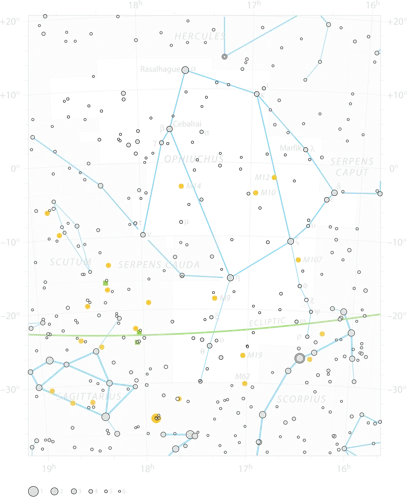
The language of the stars is a complex and intricate system that astronomers use to communicate with the celestial bodies scattered throughout the night sky. Spectroscopy is one method employed by astronomers, allowing them to unveil the elements present in stars and other celestial objects. By analyzing the light emitted by these objects, scientists can identify the unique signature of elements such as hydrogen, helium, and more. Photometry is another tool in their arsenal, decrypting the properties of stars by measuring their brightness and fluctuations. This technique enables astronomers to determine the temperature, size, and age of stars. Astrometry, on the other hand, involves mapping the heavens, precisely measuring the positions and movements of celestial objects. This helps astronomers track the paths of stars, planets, and other celestial phenomena. Each of these methods brings us closer to understanding the messages hidden in the vast expanse of the night sky, allowing us to decipher the language of the stars and unravel the secrets they hold.
3.1 Spectroscopy: Unveiling the Elements
Spectroscopy is a powerful tool used by astronomers to unveil the elemental composition of celestial objects. By analyzing the light emitted or absorbed by stars and other celestial bodies, scientists can determine the elements present in these cosmic entities. This process involves dispersing the light into its constituent wavelengths, creating a spectrum. Each element produces a unique pattern of spectral lines, enabling astronomers to identify the specific elements present. The study of these spectral lines has led to remarkable discoveries, such as the identification of chemical elements in distant stars and the detection of complex molecules in interstellar space. Spectroscopy has also played a crucial role in studying the evolution of galaxies, as different regions within a galaxy can exhibit distinct spectral signatures. Through the use of sophisticated spectroscopic instruments, astronomers continue to unravel the elemental makeup of the universe, providing valuable insights into its composition and evolution.
3.2 Photometry: Decrypting Stellar Properties
Photometry is a crucial technique used by astronomers to decrypt the properties of stars. By measuring the intensity of light emitted by celestial objects, photometry provides valuable information about a star’s brightness, color, and variability. This process involves the use of photometers, specialized instruments designed to measure the amount of light received. Astronomers capture light from stars using telescopes and direct it onto photometers, which then quantify the received photons. These measurements are often obtained across different wavelengths, enabling astronomers to analyze the star’s spectrum and gain insights into its composition and temperature. Through the analysis of photometric data, astronomers can determine a star’s luminosity, distance from Earth, and even estimate its size and mass. This valuable information allows astronomers to classify stars, identify different types of variable stars, and study stellar evolution. Photometry plays a pivotal role in the search for exoplanets, as it helps to detect the slight periodic dimming of a star’s brightness caused by the transit of an orbiting planet. By decrypting the properties of stars through photometry, astronomers expand our understanding of the universe and uncover the secrets held within the night sky.
3.3 Astrometry: Mapping the Heavens
Astrometry is a crucial technique used by astronomers to map the heavens and precisely locate celestial objects within the night sky. Through the use of advanced telescopes and intricate measurement systems, astrometry allows astronomers to determine the positions and movements of stars, planets, and other celestial bodies with remarkable accuracy. This field of study is driven by the fundamental understanding that celestial objects are constantly in motion, both within our own Milky Way galaxy and in relation to other galaxies in the vast cosmos. By plotting the positions and trajectories of these objects over time, astronomers can create detailed maps of the night sky, enabling them to track the movements of stars, identify patterns, and even discover new celestial phenomena. Astrometry plays a pivotal role in cosmic cartography, where scientists compile catalogs of celestial coordinates to facilitate future observations and navigate the vastness of space. Through the precise measurements and calculations made in astrometry, astronomers gain valuable insights into the structure, dynamics, and evolution of the universe. The information collected through astrometric observations contributes to a deeper understanding of stellar motion, galaxy formations, and even the search for exoplanets within our own galaxy. Astrometry is an integral part of astronomical research, enabling scientists to unravel the mysteries of the heavens and expand our knowledge of the universe’s grand tapestry.
Interpreting Celestial Messages
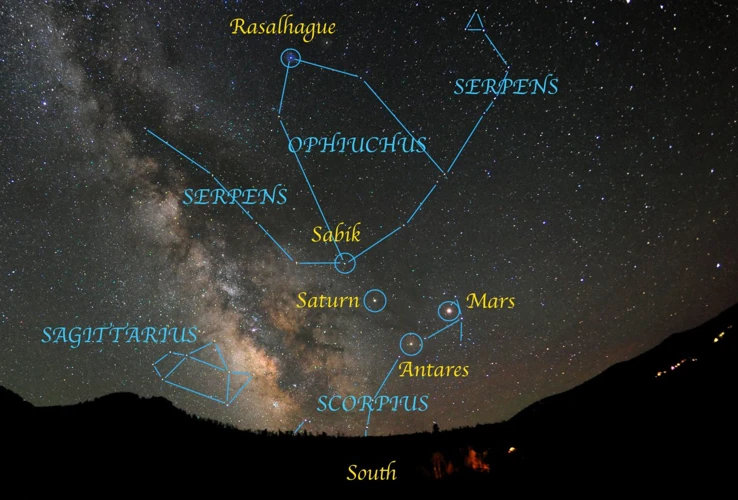
Interpreting celestial messages is a crucial aspect of astronomy, as it allows astronomers to understand the vast amount of information that the universe has to offer. One method of decoding these messages is through stellar classification systems. By categorizing stars based on their temperature, brightness, and spectral characteristics, astronomers can gain valuable insights into their evolutionary stages and properties. This classification system helps scientists understand the life cycles of stars and how they interact and influence their surroundings. Another fascinating aspect of interpreting celestial messages is the identification of exoplanets. Using various techniques such as the transit method and radial velocity measurements, astronomers have been able to detect and study planets orbiting stars beyond our solar system. This has opened up a whole new realm of possibilities in the search for extraterrestrial life. Additionally, astronomers are constantly discovering galactic structures, such as galaxies, clusters, and superclusters. Through careful observations and data analysis, they can map the distribution and movements of these structures, shedding light on the large-scale organization and evolution of the universe. The interpretation of celestial messages is a complex and ongoing process, but it allows us to uncover the secrets of the cosmos and deepen our understanding of the universe we inhabit.
4.1 Stellar Classification Systems
Stellar classification systems play a crucial role in categorizing and organizing the vast number of stars in the universe. Astronomers have developed various classification systems to classify stars based on their properties such as temperature, luminosity, and spectral characteristics. One of the most commonly used systems is the Harvard Spectral Classification, which categorizes stars into different spectral types denoted by letters such as O, B, A, F, G, K, and M. These letters correspond to specific temperature ranges, with O-type stars being the hottest and M-type stars being the coolest. Another classification system, the Hertzsprung-Russell (HR) diagram, plots the luminosity of stars against their effective temperature. The HR diagram provides a visual representation of stellar evolution, allowing astronomers to study the life cycles of stars and understand their characteristics at different stages. Additionally, astronomers utilize the Morgan-Keenan (MK) system, which further subdivides stars using a combination of spectral type and luminosity class. This system provides more detailed information about a star’s properties, such as its size, mass, and stage of evolution. Stellar classification systems not only help astronomers organize and classify stars, but they also provide valuable insights into the physical properties and behavior of these celestial objects. By studying the characteristics of stars within different classifications, astronomers can better understand the processes and mechanisms that govern the universe.
4.2 Identifying Exoplanets
Identifying exoplanets, or planets that orbit stars outside of our own solar system, is a fascinating area of astronomical research. Astronomers employ various techniques and instruments to detect these distant worlds, expanding our understanding of the vastness and diversity of the universe. One commonly used method is the transit method, which involves studying the faint dimming of a star’s light as a planet passes in front of it. By carefully analyzing the changes in brightness over time, astronomers can infer the existence of an exoplanet and gather valuable information about its size, orbit, and even its atmosphere. Another technique, known as the radial velocity method, relies on measuring tiny shifts in a star’s spectrum caused by the gravitational influence of an orbiting planet. By studying these subtle stellar wobbles, scientists can deduce the presence and some characteristics of exoplanets. Additionally, advancements in technology have allowed for the direct imaging of exoplanets. By using sophisticated instruments and techniques to block out the overwhelming glare of a star, astronomers can capture actual images of these distant worlds, providing invaluable insights into their composition and physical properties. The discovery of exoplanets opens up a wealth of possibilities for further exploration, including the search for potentially habitable environments and the potential for discovering signs of extraterrestrial life. The study of exoplanets is a testament to the ingenuity and perseverance of astronomers in their efforts to unravel the mysteries of the universe.
4.3 Discovering Galactic Structures
4.3 Discovering Galactic Structures:
Discovering the structures that exist within our galaxy is a fascinating field of study in astronomy. Astronomers utilize various methods and tools to unravel the complex web of galactic structures that make up our universe. One technique used is photometry, which involves measuring the brightness of stars and other celestial objects. By analyzing the light emitted by stars, astronomers can gather vital information about their properties, such as temperature and distance from Earth. This data allows scientists to map out the distribution of stars within a galaxy and identify structures such as spiral arms, galactic clusters, and even galactic mergers. Another method employed is spectroscopy, which involves studying the light emitted or absorbed by objects in space. By analyzing the unique spectral patterns, astronomers can determine the chemical composition and motion of celestial objects, helping to uncover details about the structure and dynamics of galaxies. Additionally, advancements in technology have allowed astronomers to use powerful telescopes and instruments to capture detailed images of distant galaxies. These images provide a wealth of information and reveal intricate structures, such as barred spirals, elliptical galaxies, and even supermassive black holes at the centers of galaxies. The study of galactic structures not only helps us understand the vastness and complexity of our own Milky Way galaxy but also provides insights into the formation and evolution of galaxies throughout the universe. With ongoing research and advancements in technology, astronomers continue to push the boundaries of knowledge, unraveling the mysteries of galactic structures and expanding our understanding of the cosmos.
Uncovering the Universe’s Secrets
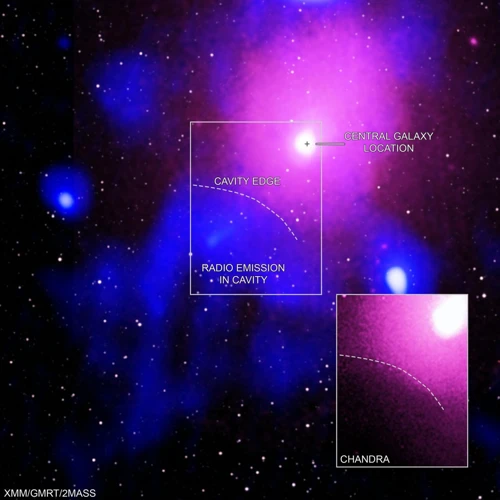
As astronomers continue to explore the vastness of the universe, they strive to uncover its deepest secrets. One of the ways they do this is by studying extraordinary cosmic events that serve as powerful forms of communication. Supernovae, for instance, are explosive stellar events that release a tremendous amount of energy and information about the elements involved. These cataclysmic explosions can be observed and studied to gain insights into the life and death of stars. Another fascinating phenomenon is gamma-ray bursts, intense bursts of gamma-ray radiation that are believed to be produced during the collapse of massive stars or the merging of binary neutron stars. These bursts serve as cosmic telecommunications, relaying information across vast distances. Additionally, the cosmic microwave background radiation, a faint echo of the Big Bang, whispers ancient secrets about the formation and evolution of the universe. By studying these cosmic events and signals, astronomers are able to uncover the universe’s hidden messages and deepen our understanding of the cosmos.
5.1 Supernovae: Explosive Stellar Communication
Supernovae are some of the most awe-inspiring events in the universe, serving as explosive forms of communication from dying stars. When a massive star reaches the end of its life cycle, it undergoes a cataclysmic explosion known as a supernova, releasing an unimaginable amount of energy into space. These powerful explosions can outshine entire galaxies and be detected from vast distances. The intense burst of energy released during a supernova creates shockwaves that propagate through space, carrying crucial information about the life and death of the star. Scientists study these celestial spectacles using a variety of methods, such as spectroscopy and photometry, to decipher the elements involved, the type of supernova, and even to trace its origin in the galaxy. By analyzing the different wavelengths of light emitted during a supernova, astronomers can gain insights into the chemical composition of the star and the processes taking place within. The study of supernovae provides vital clues about stellar evolution, the creation of heavy elements, and the intricate dynamics of the cosmos. It is through the explosive stellar communication of supernovae that we continue to uncover the secrets of the universe and expand our understanding of the celestial marvels that surround us.
5.2 Gamma-Ray Bursts: Cosmic Telecommunications
Gamma-ray bursts (GRBs) are one of the most fascinating phenomena in the realm of astrophysics. These intense bursts of gamma-ray radiation, lasting from milliseconds to minutes, are believed to be some of the most powerful explosions in the universe. They serve as cosmic telecommunications, carrying important messages across vast distances. GRBs are thought to occur when a massive star collapses or when two neutron stars merge. As the densest objects in the universe, these events release an enormous amount of energy in the form of gamma rays. The radiation from GRBs can travel billions of light-years, making them visible from immense distances. The study of GRBs provides invaluable insights into the processes that shape the universe and the behavior of extreme cosmic events. Scientists use sophisticated instruments and telescopes to detect and analyze these bursts. By studying the duration, spectrum, and afterglows of GRBs, researchers can gain valuable information about the nature of these cataclysmic events and the objects involved. The discovery of GRBs has revolutionized our understanding of the universe’s most energetic events, and their study continues to contribute to our ever-expanding knowledge of the cosmos.
5.3 Cosmic Microwave Background: Ancient Whispers
The Cosmic Microwave Background (CMB) is a remarkable phenomenon in astronomy that holds ancient whispers from the early universe. It is the faint radiation that permeates throughout the cosmos, representing the remnants of the Big Bang. In the search for answers about the origins and evolution of our universe, scientists turn to the CMB for valuable insights. The CMB was first discovered by Arno Penzias and Robert Wilson in 1965 and was later confirmed by satellite observations made by the Cosmic Background Explorer (COBE) mission in 1992. The CMB is often described as the “afterglow” of the Big Bang, as it provides us with crucial information about the initial conditions of the universe and the formation of cosmic structures. By studying the fluctuations and patterns in the CMB, scientists can gain insights into the composition of the universe, estimate its age, and even explore the possibility of other universes beyond our own. This ancient whisper, originating from a time when the universe was only 380,000 years old, has helped cosmologists refine their understanding of the cosmos and confirm the predictions of the Big Bang theory. With advancements in technology and the completion of missions like the Planck satellite, scientists continue to analyze the CMB data, unraveling the mysteries of our universe’s ancient past. Through precise measurements and sophisticated analysis techniques, astronomers are gaining a clearer picture of the universe’s infancy and the conditions that led to the formation of galaxies and other cosmic structures. The study of the cosmic microwave background is an ongoing endeavor, continuously deepening our understanding of the cosmos and shedding light on the ancient whispers that reverberate through the vast expanse of space.
Conclusion
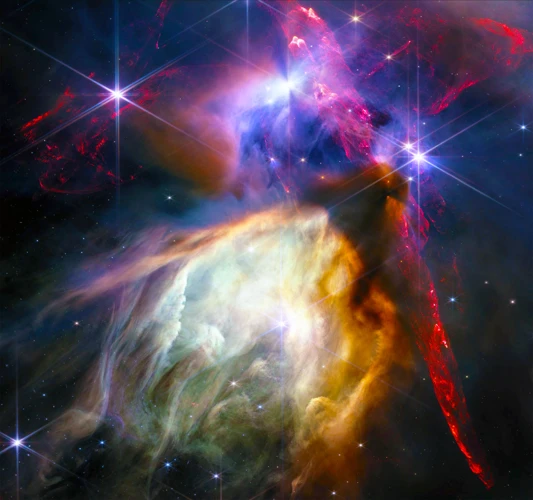
In conclusion, the language of the stars is a captivating and ever-evolving field of study that allows astronomers to communicate with the vast universe. From the ancient origins of astronomy, where early civilizations used their observations to decipher the movements and patterns of the night sky, to the modern techniques and technologies that enable us to delve deeper into the mysteries of the cosmos, astronomers have made remarkable progress in understanding the celestial objects that surround us. By employing spectroscopy, astronomers can unveil the elements present in stars and other celestial bodies, shedding light on their composition and origins. Photometry, on the other hand, allows for the decryption of stellar properties, providing insights into aspects such as temperature, luminosity, and distance. Astrometry plays a vital role in mapping the heavens, allowing astronomers to precisely locate celestial objects and track their movements over time. Stellar classification systems aid in categorizing and organizing the vast variety of stars, while the identification of exoplanets opens up new possibilities for the search for extraterrestrial life. Furthermore, astronomers have made remarkable discoveries regarding galactic structures, unveiling the magnificence of our own Milky Way and beyond. Supernovae, eruptive explosions of massive stars, serve as powerful messages in the night sky, informing scientists of the life cycles and interactions of these celestial giants. Gamma-ray bursts, cosmic telecommunication signals, provide valuable insights into the most energetic events in the universe. Finally, the cosmic microwave background offers whispers from the distant past, enabling astronomers to learn about the early stages of the universe and the formation of galaxies. In this vast and intricate cosmic symphony, astronomers tirelessly strive to decipher the celestial messages encoded in the stars. As technology advances and our knowledge grows, the language of the stars continues to unfold, offering us glimpses into the secrets of the universe and fueling our curiosity to explore further. So let us continue to gaze up at the night sky, marveling at its beauty, and listening to the whispers of the stars, for they hold the key to unlocking the profound mysteries that lie beyond our earthly realm.
Frequently Asked Questions

1. How did ancient civilizations track the movements of celestial bodies?
Ancient civilizations such as the Babylonians and Egyptians used various methods to track celestial bodies. For example, Babylonian astronomers relied on careful observations and recorded their findings on clay tablets. Egyptian astronomers, on the other hand, integrated their celestial observations into their religious and mythological beliefs.
2. What role did astrology play in ancient astronomical observations?
Astrology, the belief that celestial bodies influence human affairs, played a significant role in ancient astronomical observations. Many ancient civilizations believed that the positions of the stars and planets could offer insight into human destiny and guide decision-making.
3. How have telescopes revolutionized modern astronomy?
Telescopes have revolutionized modern astronomy by allowing us to observe celestial objects in far greater detail and with more precision. They have enabled astronomers to study distant galaxies, exoplanets, and even the remnants of exploded stars known as supernovae.
4. What is spectroscopy and how does it help astronomers understand the elements?
Spectroscopy is the study of how light interacts with matter. Astronomers use spectroscopy to analyze the light emitted or absorbed by celestial objects, which reveals valuable information about their chemical composition and the elements present.
5. What is the significance of astrometry in mapping the heavens?
Astrometry plays a crucial role in mapping the heavens. It involves the precise measurement of the positions and movements of celestial objects, allowing astronomers to create detailed maps of our galaxy and beyond, helping us better understand the structure of the universe.
6. How do astronomers classify stars?
Astronomers classify stars based on their temperature, brightness, and spectral characteristics. The most widely used classification system is the Harvard spectral classification, which categorizes stars into groups such as O, B, A, F, G, K, and M, based on their spectral lines.
7. How do astronomers identify exoplanets?
Astronomers identify exoplanets through various methods, including the transit method, where they observe changes in a star’s brightness caused by a planet passing in front of it, and the radial velocity method, where they detect the gravitational tug of an orbiting planet on its parent star.
8. What are supernovae and why are they important in stellar communication?
Supernovae are powerful explosions that occur when massive stars reach the end of their life cycle. They release an enormous amount of energy and produce heavy elements necessary for the formation of new stars and planets. The study of supernovae provides valuable insights into stellar evolution and the communication of crucial elements in the universe.
9. What are gamma-ray bursts and how do they serve as cosmic telecommunications?
Gamma-ray bursts (GRBs) are intense bursts of gamma-ray radiation that occur in distant regions of the universe. They are thought to be produced by the explosion of massive stars or the merging of neutron stars. GRBs can provide important information about the early universe and the formation of black holes.
10. What is the cosmic microwave background and why is it considered an ancient whisper?
The cosmic microwave background (CMB) is the residual radiation left over from the early stages of the universe, commonly known as the Big Bang. It is considered an ancient whisper because studying the CMB allows astronomers to observe the universe as it was over 13 billion years ago, gaining insights into its origin and evolution.
References
Frequently Asked Questions

1. What are the ancient origins of astronomy?
The ancient origins of astronomy can be traced back to the earliest human civilizations, such as the Mesopotamians and the Egyptians, who observed and recorded celestial events for various purposes, including agriculture and navigation.
2. How do astronomers collect data about celestial objects?
Astronomers collect data about celestial objects through various methods, including the use of telescopes, satellites, and space probes. They analyze the light emitted or reflected by these objects to gather information about their composition, temperature, and other properties.
3. What is spectroscopy, and how does it help astronomers understand celestial elements?
Spectroscopy is a technique used by astronomers to analyze the spectra of light emitted by celestial objects. By studying the unique patterns and wavelengths of light, astronomers can identify the elements present in stars, galaxies, and other cosmic phenomena.
4. How do astronomers identify exoplanets?
Astronomers identify exoplanets through a variety of methods, including the transit method and the radial velocity method. These techniques involve detecting the subtle changes in light or gravitational pull caused by the presence of a planet orbiting a distant star.
5. What is the significance of supernovae in astronomy?
Supernovae, the explosive deaths of massive stars, play a crucial role in astronomy. These powerful events release vast amounts of energy and create heavy elements, shaping the universe’s evolution and providing valuable insights into stellar life cycles.
6. How do astronomers communicate information about galactic structures?
Astronomers communicate information about galactic structures through detailed maps and cataloging systems. They use techniques like astrometry and photometry to measure the positions and properties of stars and other celestial objects within galaxies.
7. What is the cosmic microwave background, and why is it significant?
The cosmic microwave background (CMB) is the remnant radiation from the early universe, often referred to as the “afterglow” of the Big Bang. By studying the CMB, astronomers can gather valuable information about the composition, age, and expansion of the universe.
8. How do astronomers classify different types of stars?
Astronomers classify stars using a system called stellar classification, which is based on their temperature, color, spectral features, and luminosity. This classification helps astronomers understand the life cycles and evolutionary paths of stars.
9. What are gamma-ray bursts, and why are they important in cosmic telecommunications?
Gamma-ray bursts are intense explosions that release high-energy gamma rays. They are believed to be associated with supernovae or the merging of neutron stars. These bursts provide astronomers with valuable information about the early universe and the processes involved in the birth of stars and galaxies.
10. How do astronomers decipher the properties of distant stars through photometry?
Astronomers use photometry to measure the brightness and variability of stars. By analyzing the changes in light intensity, they can determine the star’s temperature, size, and other characteristics. This information helps astronomers understand the nature and behavior of distant stars.
References
- Written in the Stars: How Cultures View the Cosmos
- Astronomers capture radio signal from distant galaxy
- COMMUNICATINGASTRONOMY






